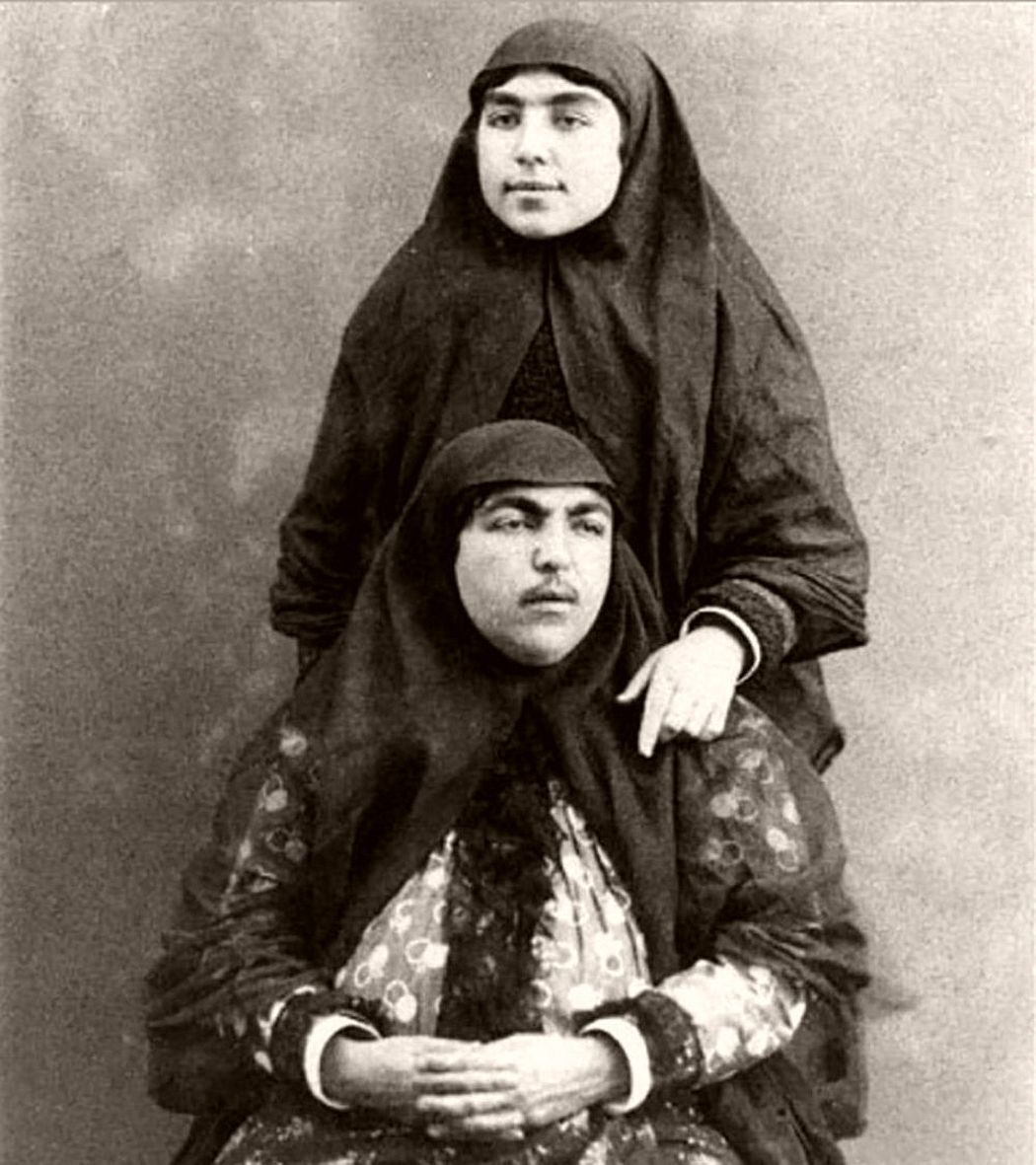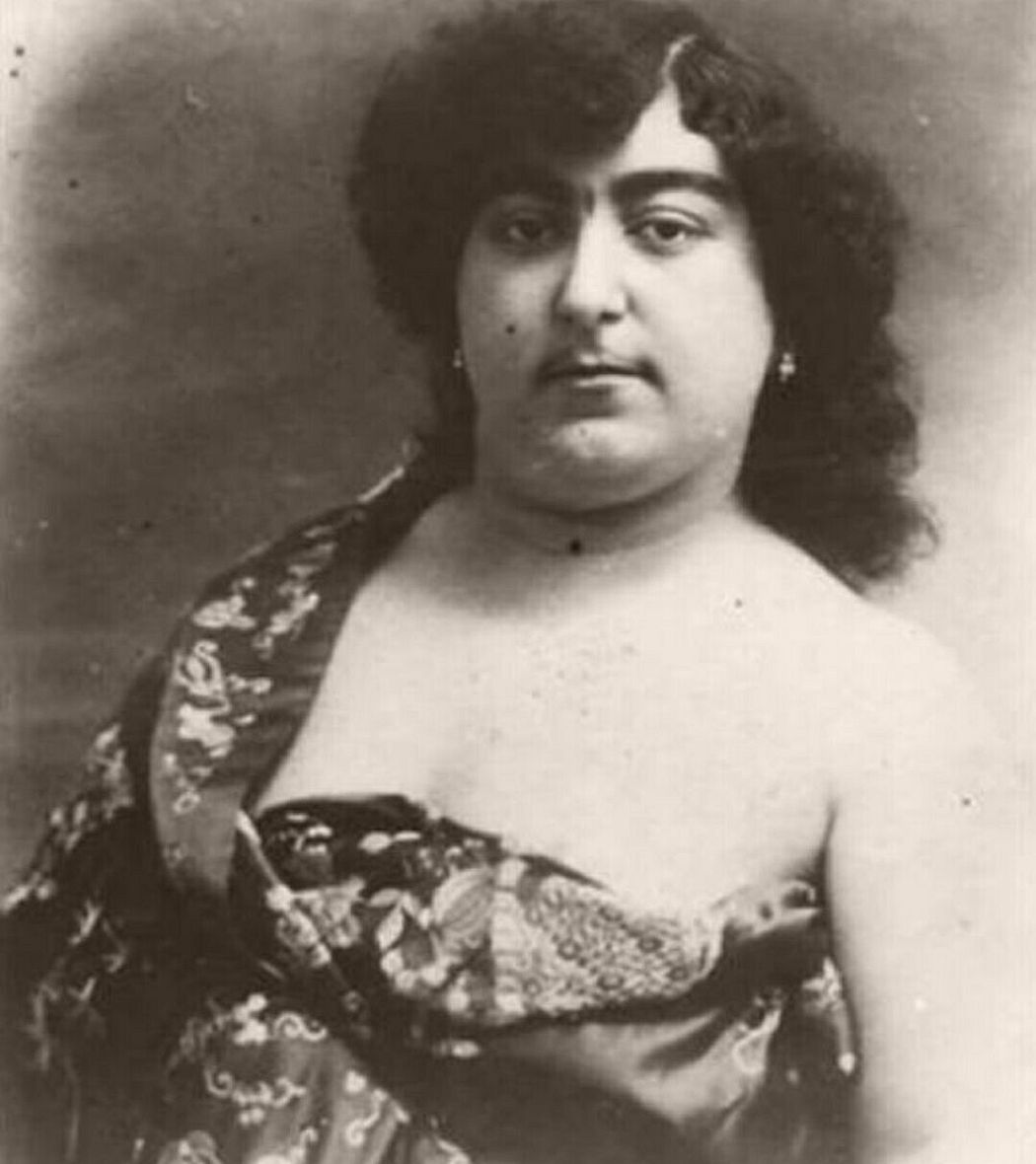In the annals of Persian history, few figures captivate the imagination and intellect quite like Zahra Khanom. Often obscured by modern misconceptions and viral hoaxes, her true legacy as a formidable intellectual, artist, and pioneering feminist of the Qajar Dynasty deserves a meticulous and respectful re-evaluation. Beyond the sensationalized images that have circulated online, Zahra Khanom was a woman of profound substance, whose life and work offer invaluable insights into a pivotal era of Iranian history.
Her story is not merely that of a princess born into privilege, but a testament to an extraordinary individual who leveraged her position to challenge societal norms, champion women's rights, and meticulously document the world around her. This article delves into the authentic narrative of Zahra Khanom, exploring her multifaceted contributions and enduring significance, while dispelling the myths that have long overshadowed her remarkable achievements.
Table of Contents
- Biography of Zahra Khanom: A Life of Purpose
- Personal Data and Biodata
- The Qajar Dynasty: A Backdrop to Zahra's Life
- A Polymath of Her Time: Accomplishments and Intellect
- The First Persian Feminist: Zahra's Activism
- Debunking the Myths: Zahra's Looks and the Hoaxes
- A Princess Adored: Her Suitors and Their Devotion
- Zahra's Enduring Legacy: Beyond the Palace Walls
Biography of Zahra Khanom: A Life of Purpose
Born into the opulent yet complex world of the Qajar Dynasty, Zahra Khanom's life began in 1883 within the grand confines of Tehran's Golestan Palace. From her earliest days, it was clear she was no ordinary royal. Descended from a long line of illustrious relatives and ancestors, Zahra was steeped in the traditions and expectations of her noble lineage. Yet, she possessed an innate curiosity and a fiercely independent spirit that would set her apart.
Her childhood, while privileged, was also one of intellectual rigor. Surrounded by the cultural richness of the Qajar court, she immersed herself in various disciplines. Unlike many women of her time, even those of high birth, Zahra was afforded opportunities for extensive education and personal development. This foundation enabled her to blossom into the remarkably accomplished individual she became: a painter, writer, musician, intellectual, and, crucially, an activist. Her personal diaries, which serve as invaluable historical documents, confirm her birth year and place, offering a direct window into her formative years and the unfolding events of her time. These memoirs, penned by Zahra Khanom herself, are a primary source for understanding the Qajar era from an insider's perspective.
Zahra's life spanned a period of significant transition for Iran, from the late 19th to the early 20th century. She witnessed the twilight years of the Qajar rule and the dawn of a new era. Her active engagement in the social and political landscape of Iran during this tumultuous time underscores her commitment to progress and reform. She was not content to merely observe history; she actively participated in shaping it. Her demise came on January 25, 1936, at the age of 53, leaving behind a legacy that continues to resonate, even as it has been partially obscured by modern misinterpretations.
Personal Data and Biodata
To better understand the individual behind the legend, here is a concise overview of Zahra Khanom's personal data:
| Attribute | Detail |
|---|---|
| Full Name | Zahra Khanom (often referred to as Princess Qajar, though this is a title, not her name) |
| Common Misconception | Not Tadej al Saltaneh |
| Date of Birth | 1883 |
| Place of Birth | Golestan Palace, Tehran, Persia (Iran) |
| Date of Demise | January 25, 1936 |
| Age at Demise | 53 years old |
| Dynasty | Qajar Dynasty |
| Nationality | Persian (Iranian) |
| Known For | Memoirist of the Qajar Dynasty, First Persian Feminist, Painter, Writer, Musician, Intellectual, Activist |
| Siblings | Two full siblings (Ahmad, Farah), at least 39 half-siblings |
| Zodiac Sign | Unknown (due to unrecorded exact birth date) |
The Qajar Dynasty: A Backdrop to Zahra's Life
To truly appreciate the significance of Zahra Khanom, one must understand the historical context of the Qajar Dynasty. This Iranian royal dynasty, of Turkic origin, specifically from the Qajar tribe, held sway over Iran from 1789 to 1925. Spanning over a century, the Qajar era was characterized by significant internal reforms, external pressures from European powers, and a burgeoning intellectual movement that sought to modernize the nation.
During the Qajar rule, Iran underwent a complex process of political, social, and economic transformation. While the dynasty maintained a centralized authority, it also faced challenges from various factions and increasing foreign intervention. The period saw the introduction of new technologies, the establishment of modern educational institutions, and a growing awareness of global political ideologies. It was within this dynamic and often turbulent environment that Zahra Khanom lived, observed, and actively participated. Her unique position as a member of the ruling family, combined with her progressive views, allowed her to witness and influence events from a vantage point few others could claim. The memoirs she penned offer a rare, intimate look into the inner workings of the Qajar court and the broader society it governed, making them invaluable for historians studying this period.
A Polymath of Her Time: Accomplishments and Intellect
Zahra Khanom was, by all accounts, exceptionally accomplished. Her talents spanned a remarkable breadth of disciplines, distinguishing her as a true polymath of her era. She was not merely a passive observer of courtly life but an active participant in its cultural and intellectual currents. Her pursuits in painting, writing, music, and intellectual discourse were not mere hobbies; they were expressions of a profound and inquisitive mind.
The Memoirist: A Window into History
Perhaps her most enduring contribution is her role as the memoirist of the Qajar Dynasty. Her diaries and writings provide an unparalleled first-hand account of life within the royal court, offering intimate details of daily routines, political intrigues, social customs, and personal reflections. These memoirs are crucial for historians, providing a unique perspective that complements official records and external observations. They reveal the nuanced realities of a powerful family and a nation grappling with change, making Zahra Khanom an indispensable voice in the study of Iranian history.
Artist and Musician: Cultivating Culture
Beyond her literary endeavors, Zahra Khanom was also a skilled painter and musician. Her artistic pursuits were not just personal expressions but also contributed to the rich cultural tapestry of the Qajar court. In a time when women's artistic contributions were often confined to private spheres, her dedication to these crafts speaks volumes about her intellectual freedom and her commitment to self-expression. Her ability to navigate and excel in these diverse fields underscores her exceptional talent and intellectual curiosity, further solidifying her reputation as a truly accomplished figure.
The First Persian Feminist: Zahra's Activism
One of the most significant aspects of Zahra Khanom's legacy is her recognition as the first Persian feminist. This title is not merely an honorific but reflects her pioneering efforts in advocating for women's rights and challenging the patriarchal norms prevalent in 19th and early 20th-century Iran. Her activism was not always overt or public in the modern sense, but manifested through her writings, her intellectual discourse, and her personal example.
Challenging Norms and Advocating for Women's Rights
Through her diaries and other writings, Zahra Khanom articulated her views on gender equality, education for women, and their role in society. She questioned traditional constraints and championed the idea that women should have greater agency and opportunities beyond the domestic sphere. As a member of the Qajar Dynasty, she played a key role in shaping the social and political landscape of Iran during the late 19th and early 20th centuries. Her intellectual prowess and outspoken nature made her a beacon for other women and progressive thinkers. Her advocacy laid foundational groundwork for the feminist movement in Iran, inspiring future generations to pursue greater freedoms and rights. Her courage to voice such progressive ideas in a conservative society marks her as a truly revolutionary figure.
Debunking the Myths: Zahra's Looks and the Hoaxes
Perhaps no aspect of Zahra Khanom's life has been more widely misrepresented and sensationalized than her physical appearance. In recent years, images purported to be of her have gone viral, often accompanied by derogatory comments about her looks by modern standards. These images, which have become internet memes, are, in fact, hoaxes. They do not accurately represent Zahra Khanom and perpetuate a false narrative that trivializes her profound historical significance.
Beauty Standards Across Eras
It is true that, according to historical accounts and her own diaries, her looks would not be considered as attractive in today's society. However, this statement must be understood within the context of fluctuating beauty standards across different eras and cultures. In the Qajar era, and indeed in many parts of the world at that time, different physical attributes were prized. A unibrow, a fuller figure, and a mustache on women were sometimes considered marks of beauty and desirability, symbolizing health, fertility, and maturity. The modern obsession with thinness, specific facial features, and a lack of body hair is a relatively recent phenomenon. To judge historical figures by contemporary aesthetic norms is anachronistic and culturally insensitive. The focus on her supposed unattractiveness, fueled by fabricated images, distracts from her real accomplishments and reduces a complex historical figure to a mere subject of superficial judgment. It is crucial to remember that Zahra Khanom was revered for her intellect, charm, and character, not solely her physical appearance.
A Princess Adored: Her Suitors and Their Devotion
Contrary to the modern misinterpretations of her appearance, Zahra Khanom was highly admired and desired by the men of her era. Historical accounts suggest that she was not only intellectually captivating but also possessed a charm that drew many admirers. More than 140 men aspired to marry her, a testament to her allure and standing within society. This extraordinary number of suitors underscores her social prominence and the deep respect she commanded.
The extent of her admirers' devotion was profound, and tragically, in some cases, extreme. When she rejected their proposals, more than 10 of these men reportedly committed suicide. While such accounts highlight the intense societal pressures and romantic ideals of the time, they also powerfully illustrate the profound impact Zahra Khanom had on those around her. This aspect of her life further emphasizes that her value and desirability were perceived through a lens very different from today's superficial standards, focusing instead on her intelligence, character, and status.
Zahra's Enduring Legacy: Beyond the Palace Walls
Zahra Khanom's influence extended far beyond the confines of Golestan Palace. As a member of the Qajar Dynasty, she played a key role in shaping the social and political landscape of Iran during the late 19th and early 20th centuries. Her contributions were not limited to her personal artistic and intellectual pursuits; they actively contributed to the intellectual ferment and reformist movements of her time. Her advocacy for women's rights, though perhaps subtle by today's standards, was revolutionary for her era and laid groundwork for future feminist movements in Iran.
Her memoirs remain an invaluable historical resource, offering a candid and personal perspective on a transformative period in Iranian history. They provide unique insights into the lives of women in the Qajar court, the political machinations of the time, and the cultural shifts occurring within society. By meticulously documenting her experiences and observations, Zahra Khanom ensured that her voice, and the voices of those around her, would resonate through time. Her story serves as a powerful reminder that history is often richer and more complex than simplified narratives or viral falsehoods suggest. Understanding the true Zahra Khanom means appreciating her as a pivotal figure who championed progress, documented her world, and left an indelible mark on Iranian society.
In conclusion, Zahra Khanom was far more than a "Persian princess" or a subject of internet memes. She was a pioneering intellectual, a talented artist, a courageous activist, and a vital memoirist whose contributions to Iranian history and the nascent feminist movement were profound. Her life challenges us to look beyond superficial judgments and to delve deeper into the rich, complex narratives of historical figures. By doing so, we not only honor her true legacy but also gain a more nuanced understanding of history itself.
What aspects of Zahra Khanom's life do you find most compelling, and how do you think her story challenges modern perceptions of historical figures? Share your thoughts in the comments below, and consider exploring other articles on our site to uncover more hidden gems of history!


